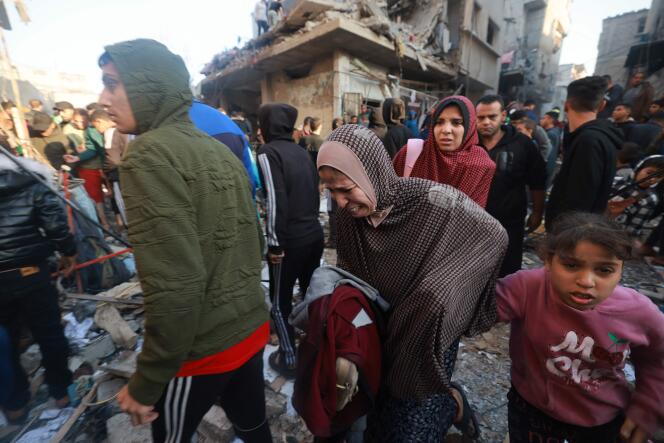


After just one week's respite, the war resumed. On Friday, December 1, at 5:44 am – just over an hour before the end of the truce between Hamas and Israel – warning sirens rang out in the south of the Jewish state for the first time in seven days. Simultaneously, media affiliated with the Palestinian Islamist movement announced on Telegram that explosions and gunfire were heard in the north of Gaza, where the Israeli army has been deployed en masse since the start of the ground offensive on October 27. At 7:06 am, the Israeli army issued the following statement: "Hamas violated the operational pause, and in addition, fired toward Israeli territory. The IDF has resumed combat against the Hamas terrorist organization in Gaza."
Half an hour later, air strikes fell on Gaza, by mid-morning they had already claimed around 30 lives. The Israeli air force also dropped leaflets on the town of Khan Yunis, southern Gaza, the likely target of a forthcoming offensive, calling on the population there to evacuate the area in the direction of Rafah, the southernmost part of the Palestinian enclave.
No surprise there. The truce was a fixed-term one. The Israeli war cabinet had planned for a maximum pause of ten days. It began with an initial phase of four days. The suspension of hostilities was based on an exchange of hostages and prisoners between Hamas and Israel, and on the provision of humanitarian aid to the enclave's south. This first phase led to the release of 50 Israelis held in Gaza, in exchange for 150 Palestinians incarcerated by Israel.
The truce was subsequently extended, with a planned rate of hostage exchange of 10 per day, for 30 prisoners. Among the latest to be freed was 21-year-old French-Israeli Mia Shem. The young woman had been kidnapped at the Supernova electronic music festival, where Hamas fighters committed a massacre. On the site of the festival – which had been attended by over 3,000 young Israelis – rescue workers discovered more than 360 corpses. The Palestinian movement released a video nine days later, in which Mia declared that she was being medically treated and had had an operation on her arm in hospital. This was one of the few signs of life to have emerged from this mass kidnapping, before the hostage exchange was negotiated by Egypt, Qatar and the United States.
In all, 80 people, mostly women, children and the elderly, were released by Hamas. Meanwhile, 240 Palestinian people were released from prison. Some 20 foreigners or dual nationals – mostly Thai nationals who were working in Israel – were also released outside of the terms of the exchange agreement. There are still some 160 people thought to be in Hamas hands.
You have 65% of this article left to read. The rest is for subscribers only.
